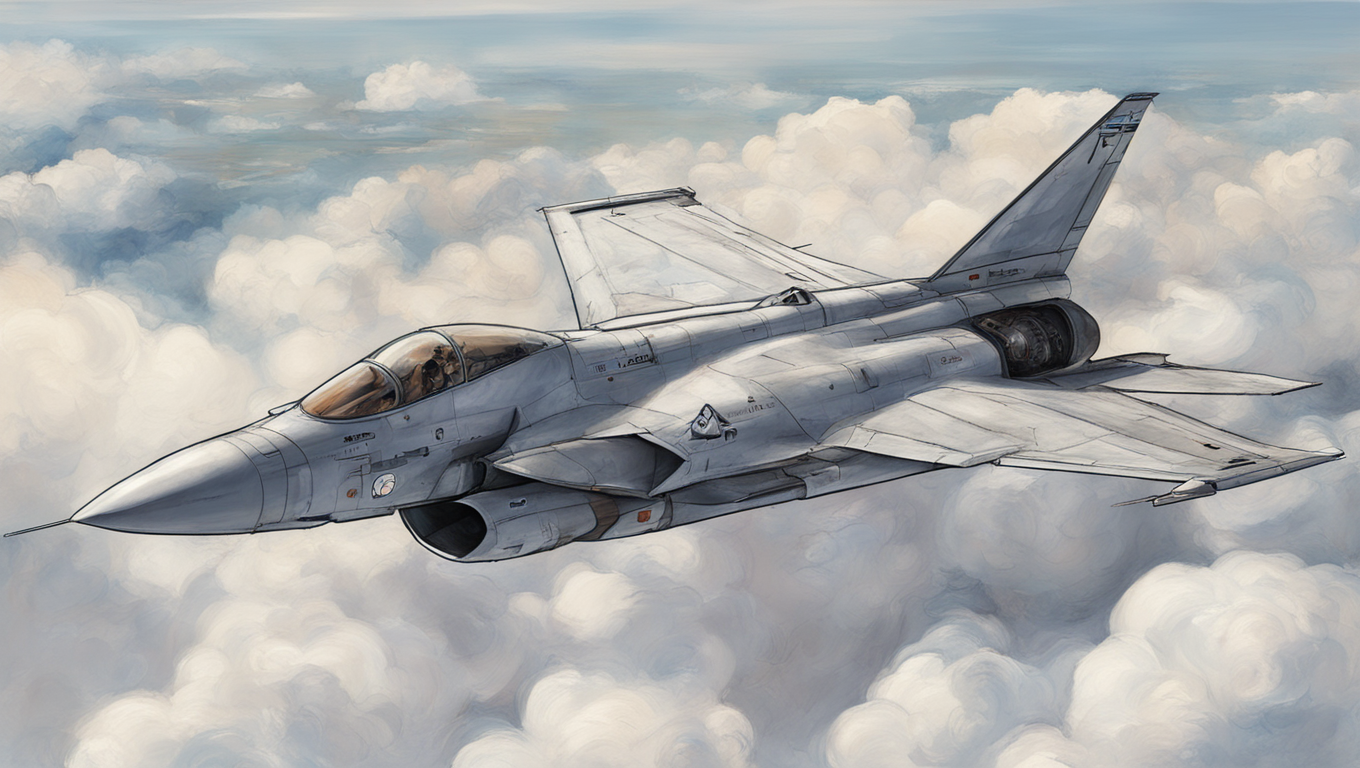In a groundbreaking display of cutting-edge technology, an experimental AI-powered fighter jet took flight at Edwards Air Force Base in California. This F-16 fighter jet, controlled entirely by artificial intelligence, demonstrated the potential of AI in military aviation. Riding in the front seat was Air Force Secretary Frank Kendall, who joined the flight to witness firsthand the capabilities of this AI-enabled aircraft.
The use of AI marks a significant advancement in military aviation, with the Air Force planning for a fleet of over 1,000 unmanned AI-enabled warplanes by 2028. This forward-thinking approach reflects the Air Force’s commitment to staying at the forefront of technological innovation. Secretary Kendall emphasized the importance of AI in air combat, stating, “It’s a security risk not to have it. At this point, we have to have it.”
During the flight, the AI-controlled F-16, named Vista, showcased lightning-fast maneuvers at altitudes of over 550 miles per hour. The aircraft engaged in a simulated dogfight with a second human-piloted F-16, demonstrating its agility and adaptability. Secretary Kendall emerged from the cockpit with a smile, proclaiming that he would trust this still-learning AI to make decisions regarding weapon deployment in the heat of war.
However, concerns loom over the autonomous capabilities of AI in military applications. Arms control experts and humanitarian groups worry that AI may eventually have the power to autonomously carry out attacks without human intervention. The International Committee of the Red Cross has raised concerns about delegating life-and-death decisions to sensors and software. It calls for urgent international political action to address the rise of autonomous weapons.
Secretary Kendall reassured that human oversight would always be essential when using weapons. The shift toward AI-enabled planes is driven by security, cost-effectiveness, and strategic capability. In the face of potential conflicts, such as with China, the current fleet of expensive manned fighters is vulnerable due to advancements in electronic warfare, space capabilities, and air defense systems. Adopting AI-powered unmanned aircraft would provide the U.S. with a significant advantage in penetrating hostile airspace with minimal risk to human pilots.
Furthermore, the economic aspect plays a crucial role in this shift. The Air Force has encountered production delays and cost overruns with the F-35 Joint Strike Fighter program, highlighting the need for smaller and more affordable AI-controlled unmanned jets. The military operators of Vista emphasize that no other country has an AI-powered jet like theirs. The aircraft’s software learns from millions of data points in simulators, applies its knowledge during real flights, and then uses that performance data to further refine its capabilities.
The progress made in AI-controlled flight is astonishing. Since Vista’s first AI-controlled dogfight in September 2023, there have been approximately two dozen similar flights. The AI versions being tested on Vista are already surpassing human pilots in air-to-air combat. This rapid learning ability showcases the potential of AI in enhancing military capabilities.
However, the pilots involved in training AI-powered aircraft are mindful of the potential transformation they are shaping. While they acknowledge the possibility of training their replacements or contributing to a future with fewer human pilots, they recognize the necessity of keeping up with technological developments. The race to harness the power of AI in military aviation is in full swing, and the United States must maintain its lead to ensure national security.
As AI continues to revolutionize military operations, the ethical implications and concerns surrounding autonomy require careful consideration. Striking a balance between deploying AI technologies and addressing societal and humanitarian concerns is crucial to shape a future where AI augments human capabilities rather than replacing them entirely.





Use the share button below if you liked it.